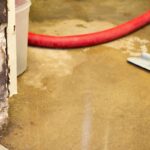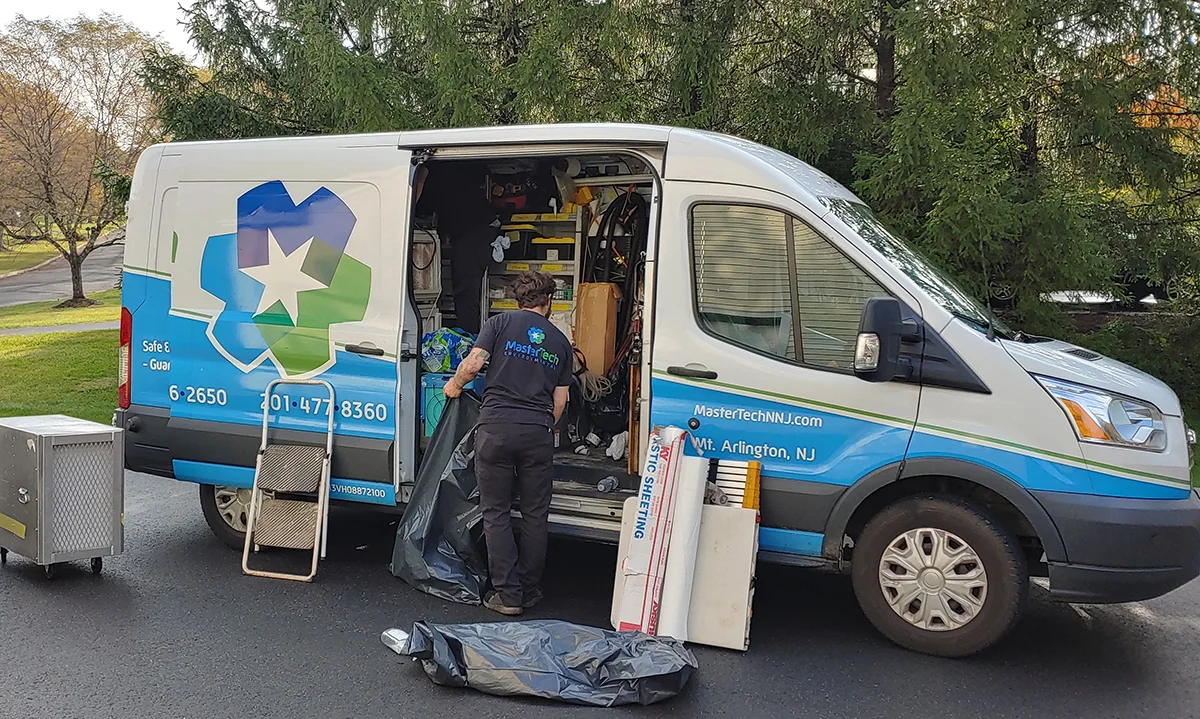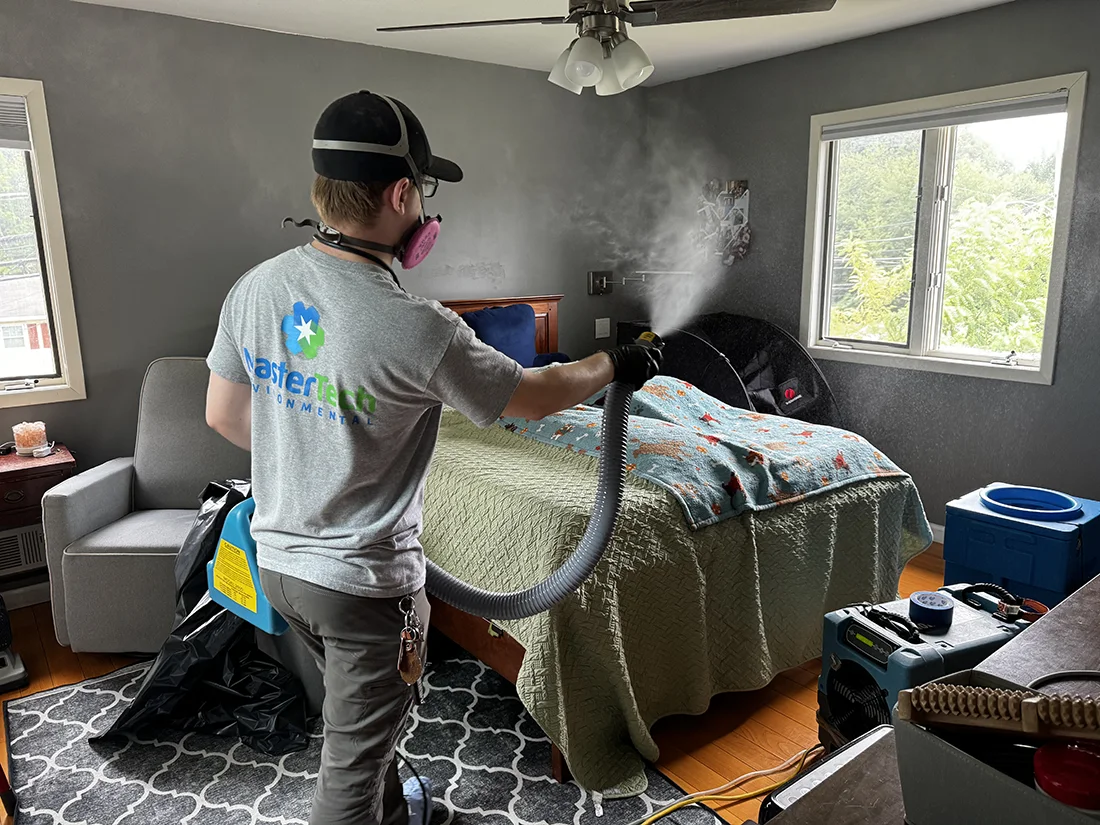Mold growth in Lake Forest homes is often caused by excess moisture and poor ventilation, which create ideal conditions for mold spores to thrive. High humidity, slow leaks, and condensation are common contributors that directly impact indoor air quality and public health.
Preventing mold requires controlling moisture levels by reducing indoor humidity below 60%, fixing plumbing issues, and properly ventilating areas like bathrooms and laundry rooms. These steps help limit mold’s ability to grow and spread inside homes in Lake Forest. Understanding the causes of mold growth is essential for maintaining a healthy living environment.
Understanding Mold Growth in Lake Forest, CA Homes
Mold growth in Lake Forest homes is driven primarily by moisture and the presence of mold spores, which exist naturally in indoor and outdoor environments. Understanding how mold spreads and which types are common in this region helps homeowners take targeted steps to control and prevent infestations.
What Is Mold and How It Spreads
Mold is a type of fungus that grows by releasing spores into the air. These spores are microscopic and can enter homes through open windows, doors, or on clothing and pets. Once spores settle on damp surfaces, they begin to colonize and reproduce.
In Lake Forest, mold growth often accelerates in areas with high humidity or water damage. Mold can start developing within 24 hours after moisture exposure, such as from leaks or condensation. The spores thrive on organic materials like wood, drywall, and carpet fibers.
Controlling indoor moisture is crucial to preventing mold spores from establishing colonies. Without excess moisture, spores remain inactive and less likely to cause problems.
Common Types of Mold in Lake Forest, CA
Several mold species frequently appear in Lake Forest homes due to the warm climate and occasional indoor moisture issues. The most common include:
- Penicillium: Grows on water-damaged materials and often found behind walls or under carpet.
- Aspergillus: Can develop on dust, damp fabrics, and insulation.
- Cladosporium: Appears on wood, painted surfaces, and window sills.
- Stachybotrys chartarum (toxic mold): Usually grows on materials with heavy water damage and poses health risks.
These molds contribute to ecosystems both indoors and outdoors, with some producing allergens or toxins harmful to sensitive individuals. Identifying and mitigating these types reduces the chance of toxic mold development and related health concerns.
For more details on mold growth triggers and prevention in Lake Forest, see mold growth causes and prevention methods.
Primary Causes of Mold Growth
Excess moisture in homes creates an ideal environment for mold to develop quickly. Persistent water entry from damaged roofs, plumbing faults, or flooding events can saturate building materials and support mold colonization without prompt repair and drying.
Roof Leaks and Water Intrusion
Roof leaks in Lake Forest homes often arise from damaged shingles, cracked flashing, or clogged gutters that prevent proper drainage. Water can seep into attics and walls, remaining trapped behind insulation or drywall where it promotes mold growth.
Signs of roof leak issues include stains on ceilings, damp spots, and musty odors. Because leaks may be slow or hidden, daily moisture accumulation can go unnoticed for weeks.
Repairing damaged roofing components and maintaining gutters helps reduce water intrusion. Regular inspections after storms can catch leaks early before mold colonization begins, minimizing the need for costly water extraction and mold remediation.
Plumbing Issues and Hidden Leaks
Plumbing leaks behind walls, under sinks, or in crawl spaces are a common source of excess moisture in Lake Forest homes. Slow leaks from pipe joints, faulty seals, or dripping faucets often go undetected, providing continuous dampness that supports mold development.
Because these leaks are hidden, mold can grow inside wall cavities and under flooring before visible signs appear. Homeowners should monitor water bills for unexplained increases and check for damp or warped surfaces.
Resolving plumbing faults with professional repairs and drying wet areas promptly are essential to prevent mold from spreading. Proactive leak detection reduces long-term damage and avoids extensive water extraction procedures.
Flooding and Water Damage Events
Flooding from heavy rains or water line breaks introduces large amounts of water into homes, saturating floors, walls, and belongings. Moisture remaining after flooding can lead to rapid mold growth within 24-48 hours.
Floodwater can carry contaminants, increasing health risks if mold develops. Prompt water extraction and drying with dehumidification equipment are critical to stop mold from taking hold.
After flooding, affected materials like drywall and carpeting should be inspected and often replaced. Ignoring water damage allows mold colonies to spread extensively throughout structures, making recovery more difficult and costly.
For more details on mold causes and prevention, visit Top Causes of Mold Growth in Homes.
Impact of Poor Ventilation and Condensation
Poor ventilation and condensation create conditions where moisture accumulates, encouraging mold growth. These problems often occur in specific home areas where humidity is consistently high or airflow is limited. Controlling moisture through improved ventilation and moisture management devices is critical to prevent mold in Lake Forest homes.
Kitchens, Bathrooms, and Laundry Areas
These rooms generate significant moisture from cooking, bathing, and washing. Without proper ventilation, humidity builds up on surfaces like walls, ceilings, and behind appliances. This trapped moisture leads to condensation, which promotes mold growth.
Installing exhaust fans vented outside is essential. Fans should run during and after activities that produce steam. Keeping exhaust fans clean and functional helps reduce moisture levels effectively.
Regularly checking for leaks and wiping down wet surfaces limits condensation. Using window vents or opening windows occasionally also improves air circulation in these humid environments.
Attics and Garages as Problem Zones
Attics and garages often have poor airflow and temperature variations that create condensation issues. Warm air entering cooler spaces causes moisture to settle on surfaces, especially in uninsulated or unventilated areas.
Inadequate ventilation in attics traps humid air, increasing condensation risk on insulation and wooden framing. Garages can accumulate moisture from outdoor air and car emissions, which worsens without air exchange.
Adding ridge vents, soffit vents, or powered attic fans improves airflow in attics. In garages, installing vents or using portable fans boosts circulation and reduces moisture buildup.
Role of Dehumidifiers in Moisture Control
Dehumidifiers remove excess moisture from indoor air, helping maintain relative humidity below 60%. Lower humidity reduces condensation on surfaces and limits mold growth potential.
They are particularly useful in spaces where ventilation options are limited, such as basements, laundry rooms, or poorly ventilated bathrooms. Using a dehumidifier can supplement ventilation but should not replace exhaust fans in moisture-prone rooms.
Regular maintenance of dehumidifiers, including cleaning filters and monitoring humidity levels, ensures optimal performance and helps prevent mold by controlling indoor moisture effectively in Lake Forest homes. For more detailed information, see poor ventilation and mold growth advice.
Environmental and Climate Factors in Lake Forest
Lake Forest’s environment and climate influence mold growth significantly. Seasonal weather patterns, air quality, and water management practices contribute to moisture levels indoors and outdoors. Understanding these factors helps homeowners address mold risks effectively.
Climate Change Adaptation and Mold Risks
Rising temperatures and shifting rainfall patterns in Lake Forest increase humidity, which creates favorable conditions for mold. Climate change adaptation efforts, such as improved water management and landscaping adjustments, aim to reduce excess moisture. However, extreme weather events like heavy rainfall or drought cycles challenge these measures, leading to inconsistent indoor humidity levels.
Homeowners need to monitor moisture sources linked to climate variability, like roof leaks during storms or increased ground dampness. Proper ventilation and moisture barriers become critical defenses. Effective adaptation involves using materials and designs that tolerate local climate stresses without trapping moisture, reducing mold risk over time.
Outdoor and Indoor Air Quality
Poor outdoor air quality in Lake Forest, affected by vehicle emissions and occasional wildfires, can introduce particulates that settle on surfaces and provide nutrients for mold. This increases mold spores in the environment, especially during dry, dusty conditions.
Indoor air quality suffers when homes are tightly sealed without adequate ventilation, trapping humidity and airborne mold spores. Controlling indoor humidity below 50% and using HEPA filters help minimize mold growth. Maintaining clean air ducts and preventing dust accumulation reduce supportive environments for mold spores inside homes. This balance between outdoor pollutants and indoor air management directly impacts mold presence.
More detailed mold prevention strategies related to moisture and humidity can be found in mold prevention best practices for coastal and ocean-influenced climates.
Health Effects and Risks of Mold Exposure
Mold exposure in homes can lead to several negative health outcomes. It often triggers immune responses and affects the respiratory system. Some effects are immediate, while others may develop with continued exposure.
Allergic Reactions and Respiratory Issues
Mold spores often cause allergic reactions in sensitive individuals. Common symptoms include sneezing, nasal congestion, itchy eyes, and skin rashes. Those with asthma may experience worsened asthma attacks when exposed to mold.
People with weakened immune systems or pre-existing lung conditions face higher risks. Mold exposure can aggravate respiratory complaints, making breathing difficult. Controlling moisture indoors is essential to minimize mold growth and reduce these health risks.
Long-Term Health Effects
Prolonged mold exposure may lead to more serious respiratory problems. Chronic conditions like bronchitis can develop from repeated irritation. Some individuals may develop hypersensitivity pneumonitis, a lung inflammation caused by exposure to airborne mold.
While mold rarely causes fatal illnesses, it poses a persistent public health concern in damp environments. Continuous exposure can lower overall lung function and increase susceptibility to other infections. Regular inspection and remediation in moist areas help prevent long-term harm.
Symptoms Like Headaches and Fatigue
Beyond respiratory symptoms, mold exposure can cause headaches and fatigue. These effects are often reported by people living in mold-infested homes. The exact cause is unclear but may be related to immune responses or irritation from mold-related toxins.
Other symptoms include eye irritation, blurred vision, and sinus congestion. These symptoms can reduce quality of life and productivity. Addressing indoor mold helps alleviate such issues by removing the environmental triggers.
For additional details, refer to Mold Info – Mold Detection SoCal and the National Institute of Environmental Health Sciences on Mold.
Detection and Assessment of Mold Problems
Identifying mold issues in Lake Forest homes requires thorough evaluation using specific techniques to pinpoint affected areas and assess severity. Proper detection involves both visual inspections and scientific testing to ensure accurate results. The following methods provide reliable data on mold presence and its impact on indoor air quality.
Home Inspection and Mold Testing Methods
A detailed home inspection is the first step in detecting mold. Inspectors focus on areas prone to moisture, such as basements, crawl spaces, bathrooms, and around plumbing fixtures. Visible mold, water stains, or musty odors also guide their search.
Mold testing often complements the inspection. Surface sampling and bulk sampling collect mold spores from suspect areas to identify the species present. This testing confirms the source and helps determine if remediation is necessary. Professionals use moisture meters and infrared cameras to locate hidden moisture that fuels mold growth.
Air Quality and Air Samples
Air quality testing measures mold spore concentration in indoor air to evaluate exposure risk. Air samples are taken from various rooms using specialized equipment that captures airborne particles over time. These samples are analyzed in a lab to identify mold types and spore counts.
This method is particularly useful when mold is suspected but not visible. High indoor humidity (above 60%) or unexplained respiratory issues can prompt air quality assessments. Consistent monitoring helps ensure that mold spores remain below levels harmful to health.
Mold Inspection and Risk Assessments
Mold inspection combines physical examination with environmental data to assess health and structural risks. Inspectors evaluate ventilation, humidity control, and past water damage. They also identify conditions that favor mold growth and predict potential spread.
Risk assessments help prioritize remediation efforts based on the severity of infestation and occupant health vulnerabilities. This process includes documenting mold extent and providing recommendations to reduce moisture and prevent recurrence. Comprehensive reports guide homeowners on effective mold management strategies.
For further details on testing and remediation options in Lake Forest, consulting a local mold remediation professional is recommended.
Preventive Strategies and Remediation Solutions
Effective mold control focuses on stopping mold spread, controlling moisture, and safely removing contaminated materials. Proper techniques for containment, drying, and protective measures reduce health risks and prevent future growth.
Containment and Safe Mold Removal
Containment prevents mold spores from spreading during remediation. Using barriers like plastic sheeting and negative air pressure systems isolates the affected area. This protects other parts of the home from contamination.
Safe mold removal involves physically removing moldy materials such as drywall, insulation, or carpet. Porous items heavily soaked with mold often need disposal. Non-porous surfaces can be cleaned with detergent and water but require careful handling.
During removal, technicians must avoid dry scraping or sanding, which can release spores into the air. Proper containment protocols combined with controlled removal minimize cross-contamination in Lake Forest homes.
Drying, Dehumidifying, and Ventilation
Drying wet areas quickly is critical. Mold thrives in moisture levels above 60%, so removing excess water reduces mold growth potential. Water leaks, floods, or high humidity are main targets.
Using dehumidifiers and fans accelerates drying times. This is especially important in basements, bathrooms, and kitchens. Maintaining indoor humidity levels below 60% is recommended.
Ventilation improves air circulation and removes moist air. Effective designs include exhaust fans in bathrooms and kitchens, plus attic vents. Proper airflow lowers dampness and helps prevent mold in Lake Forest’s climate. More on humidity control can be found at Burns Enviro.
Use of Biocides and Protective Equipment
Biocides are chemical agents used to kill mold spores on surfaces. They are applied after thorough cleaning and drying. Not all mold removers require biocides, but they help to reduce regrowth in stubborn cases.
Personal Protective Equipment (PPE) is essential for anyone dealing with mold. This includes N95 respirators, gloves, goggles, and protective clothing. PPE prevents exposure to mold spores, minimizing health risks.
Correct use of biocides and PPE ensures safety during remediation, both for homeowners and professionals. Following manufacturer guidelines and safety standards is necessary for effective mold reduction.
Hiring Mold Removal Services with Warranty
Professionals offer specialized mold removal services equipped with containment tools, drying systems, and chemical treatments. Choosing licensed mold removal services ensures experience with local humidity challenges and building standards.
Many companies provide warranties that guarantee the effectiveness of their remediation work. These warranties may cover reappearance of mold within a certain timeframe, offering peace of mind.
Homeowners in Lake Forest should verify certifications, ask about remediation methods, and confirm warranty terms before hiring. A reputable service will provide clear documentation and follow-up assessments to confirm mold control. More details on professional mold testing and removal can be found near Irvine, Mission Viejo, and Lake Forest.
Long-Term Maintenance and Prevention Tips
Effective mold prevention requires ongoing attention to building materials, proper water handling, and energy-efficient practices. Each area plays a crucial role in reducing moisture and limiting mold growth risks over time.
Drywall and Materials Care
Drywall is highly susceptible to mold if exposed to moisture for extended periods. Homeowners should promptly repair leaks and replace any wet or damaged drywall to prevent mold spores from taking hold. Using mold-resistant drywall in areas prone to humidity, like bathrooms or basements, adds an extra layer of protection.
Materials should be stored off the floor and away from walls to avoid moisture accumulation. Regular inspections for cracks or holes in the drywall can catch early signs of damage that may allow water infiltration. Ensuring proper sealing around windows and doors also helps maintain drywall integrity.
Water and Waste Management Best Practices
Controlling water sources is essential in preventing mold growth. Draining and redirecting groundwater away from the home’s foundation reduces moisture buildup around critical structures. Maintaining gutters and downspouts helps channel rainwater effectively.
Plumbing leaks, even slow ones, should be fixed immediately to avoid hidden moisture within walls or floors. Proper waste management also matters; preventing sewer backups and ensuring septic systems function well protects water quality inside the home. Using backflow prevention devices can reduce contamination risks.
Energy Efficiency and Green Infrastructure
Improving energy efficiency can indirectly prevent mold by reducing indoor humidity. Installing energy-efficient HVAC systems with dehumidifiers aids in maintaining indoor moisture below 60%, a threshold that limits mold proliferation. Regular maintenance of these systems is necessary for consistent performance.
Green infrastructure solutions, such as permeable pavements and rain gardens, help manage stormwater naturally. These reduce excess runoff near homes and lower moisture levels around foundations. Adaptation strategies like solar energy integration contribute to critical infrastructure resilience while supporting overall environmental health.
Frequently Asked Questions
Signs of mold often include visible discoloration, persistent musty odors, and unexplained health symptoms. Indoor humidity and moisture levels play a crucial role in mold growth, especially in specific climates.
What are common indicators of mold presence in a Lake Forest home?
Visible patches that are black, green, or white often signal mold. Homeowners may notice a damp or musty smell in affected areas. Allergic reactions or respiratory issues can also indicate hidden mold problems.
How does the coastal climate of Lake Forest impact mold growth indoors?
While Lake Forest is not directly on the coast, its proximity increases humidity levels. Higher humidity combined with poor ventilation creates ideal conditions for mold to develop indoors. Seasonal changes in moisture also contribute to mold risks.
What are effective strategies for controlling humidity to prevent mold in residential areas?
Using dehumidifiers can maintain indoor humidity below 60%. Proper ventilation in kitchens, bathrooms, and laundry rooms reduces moisture buildup. Fixing leaks and ensuring good airflow helps control dampness that supports mold.
Can specific construction materials reduce the likelihood of mold in Lake Forest properties?
Materials like mold-resistant drywall and treated wood lower mold growth chances. Waterproof sealants and vapor barriers installed during construction help prevent moisture intrusion. Choosing these materials limits conducive environments for mold.
What routine maintenance steps should homeowners take to minimize mold risks?
Regularly inspect plumbing for leaks and repair them promptly. Clean gutters and ensure proper drainage to avoid water accumulation near the foundation. Ventilate areas prone to moisture and monitor humidity levels throughout the home.
Are there any professional services in Lake Forest recommended for mold assessment and remediation?
Certified mold remediation specialists in Lake Forest offer thorough inspections and mold removal services. These professionals use specialized equipment to detect hidden mold and apply appropriate treatments to prevent recurrence. Local experts provide tailored solutions based on specific home conditions. More details can be found at Lake Forest mold remediation pros.









